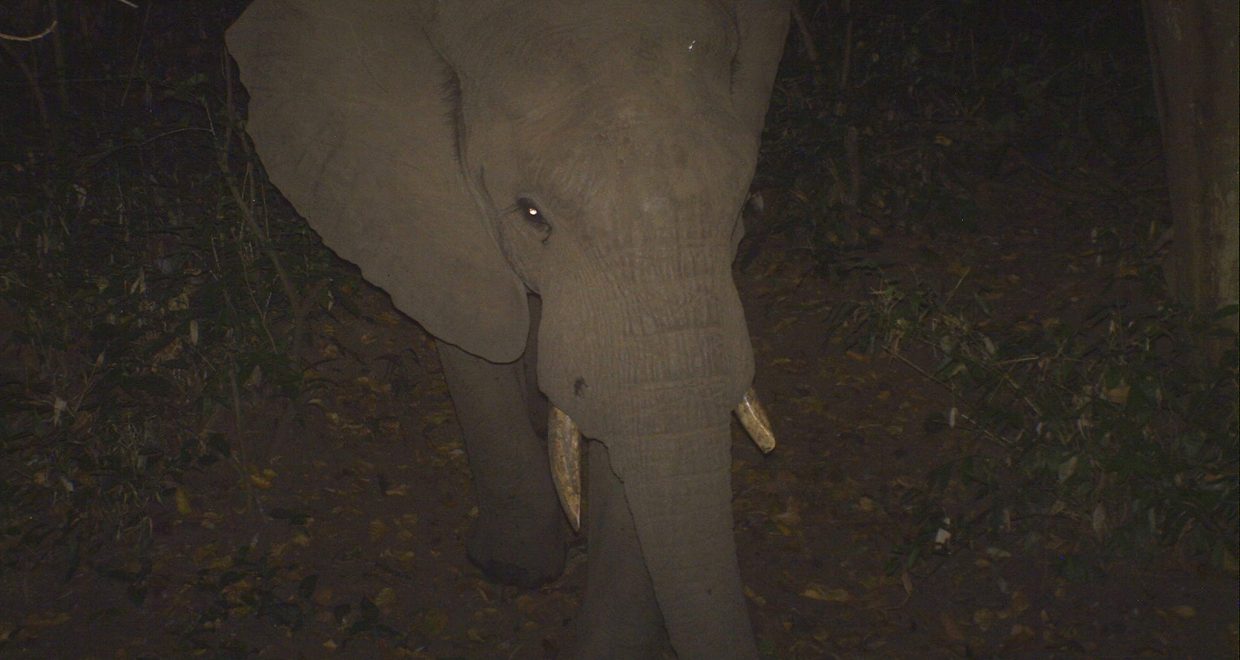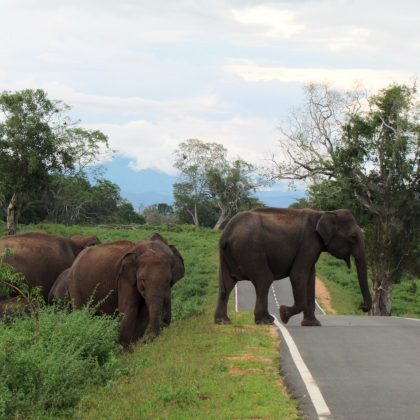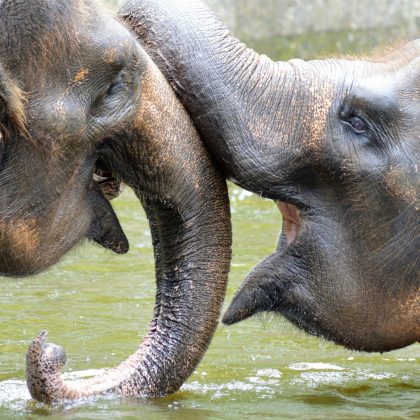Camera Traps Reveal Crop-use Behaviour in African Elephants
Researchers from the University of Stirling (UK) and the University of the Free State, Qwaqwa (South Africa) in collaboration with the Southern Tanzania Elephant Program (STEP) have published a new study in the journal Oryx that employed camera traps to investigate crop use by African elephants along the boundary of Udzungwa Mountains National Park in south-central Tanzania.
Elephant consumption of human food crops is one of the primary challenges to their coexistence with people, especially as elephant range (of which only 20% worldwide lies in protected areas) continues to be lost and fragmented. Crop losses to elephants are damaging to the livelihoods, food security and wellbeing of rural communities, and can result in retaliatory killing of elephants and erosion of support for elephant conservation programs.
For people and elephants to thrive in the long-term, it is essential to find effective ways to mitigate the impacts of elephants on people’s lives and livelihoods, and vice versa. Efforts to mitigate crop losses to elephants can be aided by an understanding of why elephants consume crops, how prevalent elephant crop use is, and how individual elephants acquire crop foraging habits.
The present study sought to understand elephant crop use in a small area of farmland (2.5 square kilometers) experiencing high rates of crop losses to elephants (with over 100 nights with crop loss incidents per year between 2011 and 2014) adjacent to Udzungwa Mountains National Park where elephants inhabit Afromontane forest and grasslands. The researchers placed camera traps along elephant trails near the National Park boundary to photograph elephants as they head in and out of farmland that abuts the park. The study found a significant pattern of co-occurrence between camera detections of elephants and crop loss incidents recorded by local enumerators in farms suggesting that elephants visiting the farms were consuming crops during many, but not necessarily all, visits.
The elephants detected by the camera traps in Udzungwa were all males, a finding identical to previous studies of elephant crop use in Amboseli, Kenya (Chiyo et al. 2011) and Kibale, Uganda (Chiyo & Cochrane 2005). The studies from these three East African sites also found that age is a predictor of crop use, and that older males are more likely to be crop users. Combined, the evidence suggests that crop use in elephants is linked to risk-taking behaviour and energetic costs associated with male life history milestones such as the initiation of reproduction in bulls aged 20-30 years and the attainment of males’ reproductive peak in their 40s (Chiyo et al. 2012). In Udzungwa and Kibale, but not in Amboseli, young bulls of dispersing age were found to visit farms, suggesting that males may come into contact with crops during dispersal from their maternal groups and through social learning. Analysis of male association networks in Amboseli, Kenya found that male networks shape the prevalence of crop use among males, with young bulls potentially learning crop use behaviour from older bulls (Chiyo et al. 2012).

In Udzungwa, the researchers identified 48 different elephants from the camera trap photos based on unique features of the elephants’ ears and tusks. The researchers were initially surprised to find such a large number bulls using a very small area of farmland, as it had been posited before that crop losses could be caused by a few habitual crop users. Importantly, 48 bulls was a minimum estimate of the number of bulls that visited the farmland over the four-year study period, as only approximately a third of the camera trap photos were suitable for individual identification.
The study also revealed that individual bulls were variable in their visitation rates to the farmland. Two-thirds of the bulls were detected only once over the four-year study period, suggesting that these bulls may be infrequent crop users. One-third of the bulls were detected multiple times and 18% more than twice over the study period, suggesting these bulls may be more frequent crop users. In Kenya by comparison, 12% of Amboseli bulls were identified to be repeat crop users from observational data (>2 detections) and 21% of bulls from Amboseli, Kilimanjaro and Tsavo-Chyulu were estimated to be repeat crop users from genetic data (>5 detections). Combined, this evidence suggests that the majority of bulls are occasional crop users, while a small proportion may use crops more frequently.
The finding from two East African populations that a large proportion of bulls are occasional crop users has several implications for strategies to reduce crop losses to elephants. The killing of elephants under lethal Problem Animal Control policies may be an overly costly and potentially ineffective means to reduce crop losses from a large number of occasional crop-using males. As older bulls are more likely to be crop users, lethal control would also remove crucial sources of ecological knowledge and important breeding individuals from the population (Chiyo et al. 2012) – this is especially detrimental to elephant populations already under threat from ivory poaching. Non-lethal methods of protecting farms from elephants are therefore preferable and require strong commitment, community buy-in and creativity.
The researchers also speculate that farm-based elephant deterrents such as beehive and chili-oil fences may be effective against a large pool of occasional crop users, while repeat crop users may pose more of a challenge as they potentially become habituated to empty threats or learn ways to navigate around deterrents. However, more applied research is required to understand how elephants behave around such deterrents, and camera traps could be a valuable, non-invasive and affordable tool for studying elephant visits to farms and responses to farm-based deterrents over time.
 The full study ‘Using camera traps to study the age–sex structure and behaviour of crop-using elephants Loxodonta africana in Udzungwa Mountains National Park, Tanzania’ Josephine Smit , Rocío A. Pozo , Jeremy J. Cusack , Katarzyna Nowak Trevor Jones is available to download for free until the 14th August 2017.
The full study ‘Using camera traps to study the age–sex structure and behaviour of crop-using elephants Loxodonta africana in Udzungwa Mountains National Park, Tanzania’ Josephine Smit , Rocío A. Pozo , Jeremy J. Cusack , Katarzyna Nowak Trevor Jones is available to download for free until the 14th August 2017.






